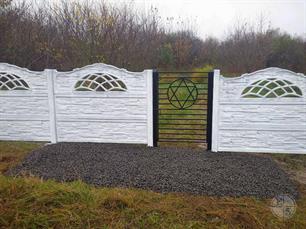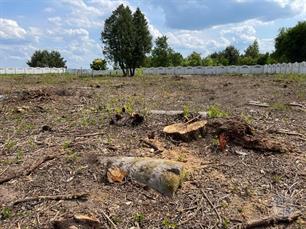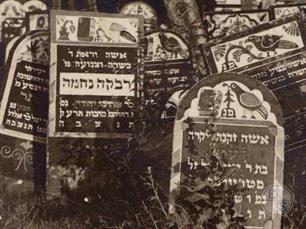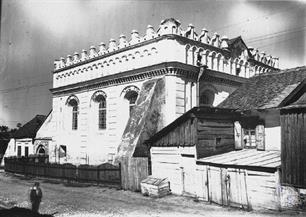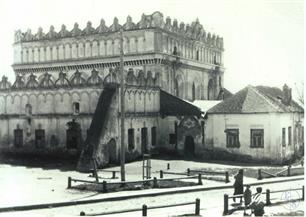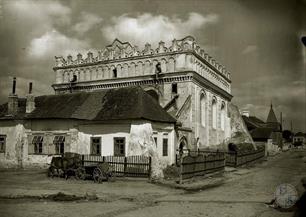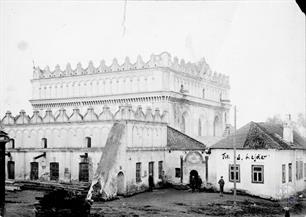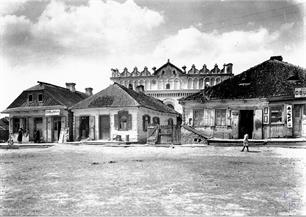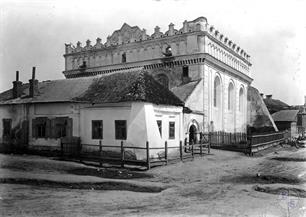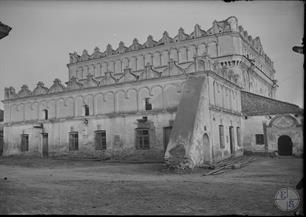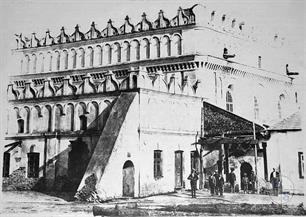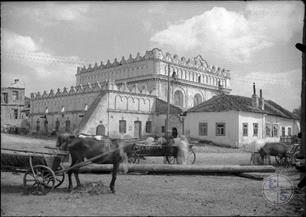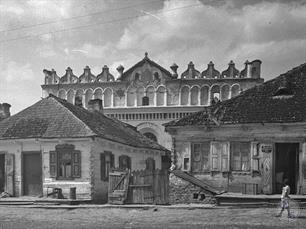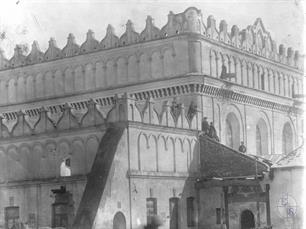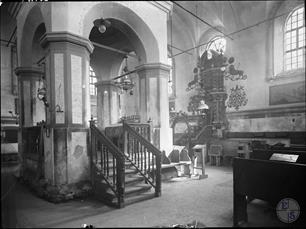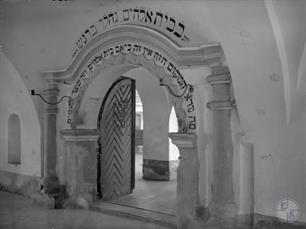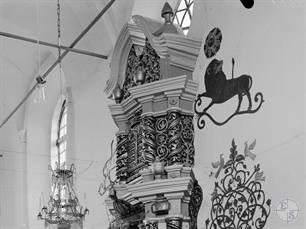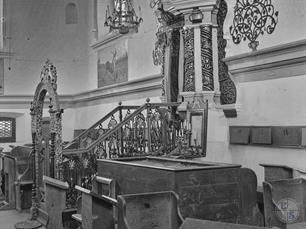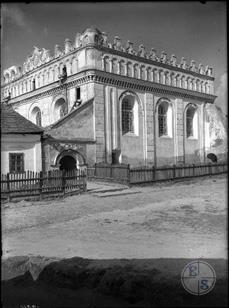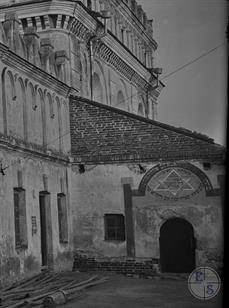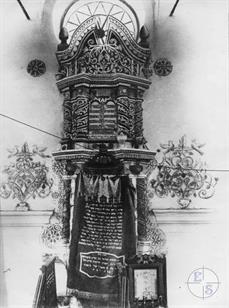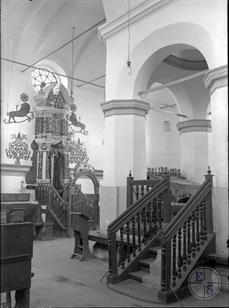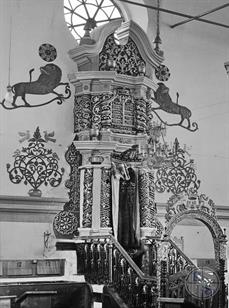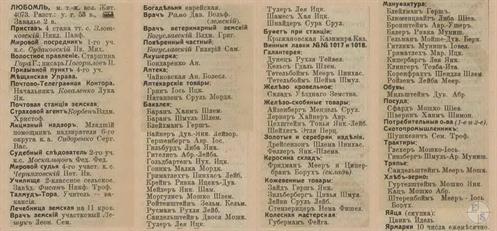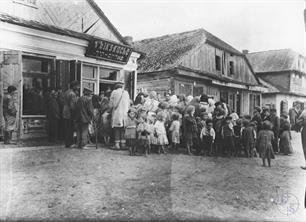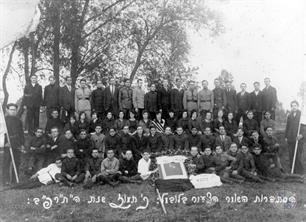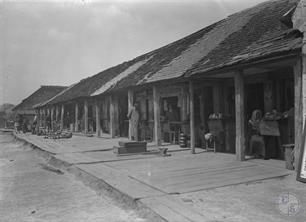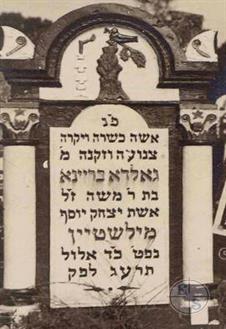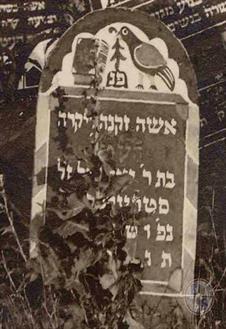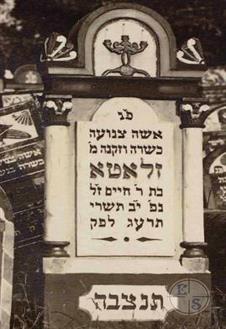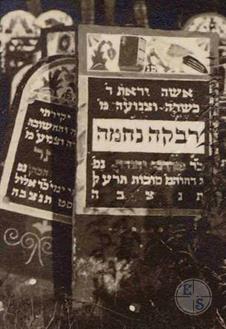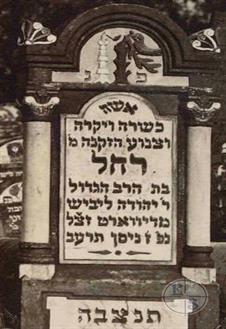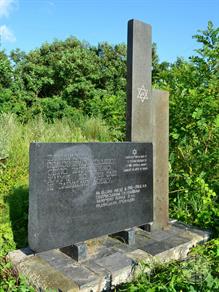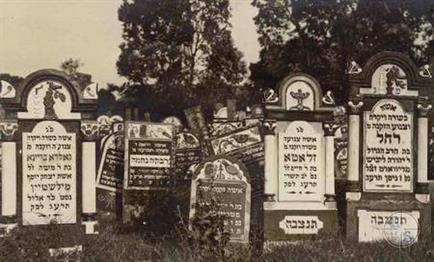Lyuboml
Sources:
- Jewish encyclopedia of Brockhaus & Efron;
- Russian Jewish encyclopedia;
- Jewish Virtual Library. Virtual Jewish World: Luboml, Ukraine
- The All South-Western Territory: reference and address book of the Kyiv, Podolsk and Volyn provinces. Printing house L.M. Fish and P.E. Wolfson, 1913;
- Yad Vashem. Lyuboml;
- Virtual Shtetl. Lyuboml;
- Encyclopedia of Jewish Life Before and During the Holocaust, vol. 2, eds. Sh. Spector, G. Wigoder, New York 2001, p. 756.
Photo:
- European Jewish Cemeteries Initiative. Lyuboml New Jewish Cemetery
- Wikipedia. The queue for free food in Beit Temhui in Luboml
- Narodowe Archiwum Cyfrowe
- Shimon Zaychik (1939), Stanislav Rakovsky (1917), S.Leider, Henrich Poddembsky (1925). Instytut Sztuki Polskiej Akademii Nauk
- GSerhiy, Wikipedia. Monument to the Murdered Jews in Lіuboml
- Tomek Wisniewski, Bagnowka. Luboml
- Jewish encyclopedia of Brockhaus & Efron;
- Russian Jewish encyclopedia;
- Jewish Virtual Library. Virtual Jewish World: Luboml, Ukraine
- The All South-Western Territory: reference and address book of the Kyiv, Podolsk and Volyn provinces. Printing house L.M. Fish and P.E. Wolfson, 1913;
- Yad Vashem. Lyuboml;
- Virtual Shtetl. Lyuboml;
- Encyclopedia of Jewish Life Before and During the Holocaust, vol. 2, eds. Sh. Spector, G. Wigoder, New York 2001, p. 756.
Photo:
- European Jewish Cemeteries Initiative. Lyuboml New Jewish Cemetery
- Wikipedia. The queue for free food in Beit Temhui in Luboml
- Narodowe Archiwum Cyfrowe
- Shimon Zaychik (1939), Stanislav Rakovsky (1917), S.Leider, Henrich Poddembsky (1925). Instytut Sztuki Polskiej Akademii Nauk
- GSerhiy, Wikipedia. Monument to the Murdered Jews in Lіuboml
- Tomek Wisniewski, Bagnowka. Luboml
Kovel district, Volyn region
In the 16-18 centuries in the Commonwealth. From 1795 - as part of the Russian Empire. In the 19th - beginning of the 20th century - the township of Vladimir-Volynsk district of the Volyn province. In 1919–39 - in the Volyn Voivodeship as part of Poland, in 1939–91 - as part of the Ukrainian SSR.
In 1765, 1226 Jews lived in Luboml,
in 1847 - 2130,
in 1897 - 3297 (73,7%),
in 1921 - 3141 (94,4%),
in 1937 - 3162 Jews (62% of total population).
Luboml is one of the towns boasting Jewish communities with an exceptionally long history. The earliest records date back to the period 1370–1382. In 1557, Jews were granted a privilege but were still not allowed to buy land or houses (this restriction was lifted in 1600). In the middle of the 16th century 400–450 Jews lived in town.
In 1670, a synagogue with defensive functions was built in Luboml.
In 1557, Kahal of Luboml decided to ban on the acquisition of real estate from non -Jews within the city wall, in order to avoid complications with Christians.
The rabbi Luboml in 1570–77 was Avrum Polak, from 1597 - Mohehe Mat.
Rabbi's court in the 1570s headed Shimon Auerbach, in the 1580s - Joel Sirkis, in the 1590s - Moishe Katsenelbogen.
In 1765, 1226 Jews lived in Luboml,
in 1847 - 2130,
in 1897 - 3297 (73,7%),
in 1921 - 3141 (94,4%),
in 1937 - 3162 Jews (62% of total population).
Luboml is one of the towns boasting Jewish communities with an exceptionally long history. The earliest records date back to the period 1370–1382. In 1557, Jews were granted a privilege but were still not allowed to buy land or houses (this restriction was lifted in 1600). In the middle of the 16th century 400–450 Jews lived in town.
In 1670, a synagogue with defensive functions was built in Luboml.
In 1557, Kahal of Luboml decided to ban on the acquisition of real estate from non -Jews within the city wall, in order to avoid complications with Christians.
The rabbi Luboml in 1570–77 was Avrum Polak, from 1597 - Mohehe Mat.
Rabbi's court in the 1570s headed Shimon Auerbach, in the 1580s - Joel Sirkis, in the 1590s - Moishe Katsenelbogen.
The synagogue was erected in 1510, was one of the best architectural structures of that time and was mentioned in all ancient books. For the construction of the synagogue, local Jews borrowed money from the Kholm Roman Catholic bishop.
In 1918, Lyuboml magistrate ordered a series of postmarks with the views of Lyuboml in Prague. On one of them they depicted a synagogue.
In 1947, the Soviet authorities dismantled the synagogue, from bricks, the road was paved. A store was built on the site of the synagogue.
In 1918, Lyuboml magistrate ordered a series of postmarks with the views of Lyuboml in Prague. On one of them they depicted a synagogue.
In 1947, the Soviet authorities dismantled the synagogue, from bricks, the road was paved. A store was built on the site of the synagogue.
In 1729, the fire destroyed all the Jewish houses, but the synagogue building was preserved.
The main cases of Jews are trade and crafts. Among the Jews were tailors, jewelers, glass workers, barber, bakers, etc.
In 1858–1915, the rabbi was Iehuda Arye Leib Finkelstein.
In 1889, the almshouse acted in town.
In 1898, Talmud Torah was opened for children from poor families.
In 1913, David Ramo was a doctor in Lyuboml. Jews owned both pharmacy warehouses, only kerosene warehouse, wheel workshop, both taverns, all 53 shops (including 20 grocery, 11 manufactory, 4 haberdashery, 4 ironed goods, 4 leather, 2 jewelry).
The main cases of Jews are trade and crafts. Among the Jews were tailors, jewelers, glass workers, barber, bakers, etc.
In 1858–1915, the rabbi was Iehuda Arye Leib Finkelstein.
In 1889, the almshouse acted in town.
In 1898, Talmud Torah was opened for children from poor families.
In 1913, David Ramo was a doctor in Lyuboml. Jews owned both pharmacy warehouses, only kerosene warehouse, wheel workshop, both taverns, all 53 shops (including 20 grocery, 11 manufactory, 4 haberdashery, 4 ironed goods, 4 leather, 2 jewelry).
The period of World War I turned out to be very difficult for the local population. In the years 1915–1918, when the town was under Austrian occupation, Jews suffered from scarcity of food, hunger, and repressions from the authorities, which were seeking to introduce forced labour in the town.
Stabilisation came with the incorporation of Luboml into the Second Polish Republic. In 1921, the town had 3,141 Jewish inhabitants (95% of the population). Most Jews made a living from crafts and petty trade; there were also several Jewish millers and wholesalers of agricultural products.
Zionism was becoming more and more popular. Many in the Jewish community were deeply involved in Zionist organizations, from the far left to the far right. The Betar movement (forerunner of the Likud Party in Israel) was one of the dominant factions. Menachem Begin, head of Betar in the 1930s and later Prime Minister of Israel, visited in 1934.
In 1920, the school of Tarbut network began to operate with teaching in Hebrew.
In the mid-1930s, the school of Yavne network was opened. Also there was a small yeshiva in the town.
In 1918–36, the rabbi was Arye Leibush London, in 1936-42 - his grandson Bencion London.
In 1920s the Jewish clinic was opened in Luboml.
As anti-Semitism and the Nazi threat grew in the 1930's, Lubomlers able to leave began to emigrate. Some went to Palestine, others to the United States.
Stabilisation came with the incorporation of Luboml into the Second Polish Republic. In 1921, the town had 3,141 Jewish inhabitants (95% of the population). Most Jews made a living from crafts and petty trade; there were also several Jewish millers and wholesalers of agricultural products.
Zionism was becoming more and more popular. Many in the Jewish community were deeply involved in Zionist organizations, from the far left to the far right. The Betar movement (forerunner of the Likud Party in Israel) was one of the dominant factions. Menachem Begin, head of Betar in the 1930s and later Prime Minister of Israel, visited in 1934.
In 1920, the school of Tarbut network began to operate with teaching in Hebrew.
In the mid-1930s, the school of Yavne network was opened. Also there was a small yeshiva in the town.
In 1918–36, the rabbi was Arye Leibush London, in 1936-42 - his grandson Bencion London.
In 1920s the Jewish clinic was opened in Luboml.
As anti-Semitism and the Nazi threat grew in the 1930's, Lubomlers able to leave began to emigrate. Some went to Palestine, others to the United States.
After September 17, 1939, with the arrival of the Red Army following the Ribbentrop-Molotov Pact, Luboml became part of Soviet Ukraine. Soviet annexation put an end to all independent political and public life, including of the Jews. The Tarbut and Yavne Hebrew-language schools were compelled to adopt the Soviet Yiddish-language curriculum. The Soviets also banned private trade and industry.
Germans troops captured Luboml on June 25, 1941. Upon their arrival, the Germans set fire to the center of the town, where most of the Jews were living. Shortly afterwards the Jews were required to wear white armbands bearing a blue Star of David (replaced in September by a yellow badge).
A curfew was imposed on the Jews and the German authorities demanded that the Jews hand over all their gold objects and other valuables or be killed. During this period a Judenrat (Jewish council), headed by Kalman Kopelzon, was established and a Jewish police force was set up.
On July 22 a German unit shot to death several hundred Jewish men near the Jewish cemetery outside the town.
Another murder operation was carried out on August 21, 1941 when several hundred Jews, mostly women and elderly people, were shot to death in the Borki Forest outside of town.
At the end of the same month the Germans forced some Jewish women to publicly burn scrolls of the Torah.
After those two murder operations the German authorities ordered the Jews to hand over all their livestock to the German army. The Germans also constantly demanded "contributions" of gold, leather boots, and currency. In November 1941 the Jews of Luboml were forced to live in a concentrated manner, on several of the town's streets.
In December, on the order of Gebietskommissar (regional commissar) Uhde, the Jews were forced into a two-part ghetto: one part was reserved for skilled workers and their families, while the other was designated for the rest of the town's Jews. The Jews in the ghetto were required to pay the "taxes" levied on them and were conscripted for forced labor.
On October 1, 1942 the Germans began the liquidation of the ghetto. According to a Soviet ChGK document 1,700 Jews were shot to death on that day at the former brick factory near Borki village. The murder operation lasted about a week since many Jews initially escaped the murder operation or hid in bunkers and various other prepared hideouts before they were caught. Only a few managed to escape to the forest to join the partisans.
Luboml was liberated by the Red Army on July 19, 1944. After liberation, several dozen Jews returned to the city, most of them soon left for Poland.
Since 1944, an illegal minyan existed in Luboml, gathered in private apartments.
In October 1954, minyan (17 people) was dispersed, religious literature was seized.
In 2003, the Jewish population was in town.
Germans troops captured Luboml on June 25, 1941. Upon their arrival, the Germans set fire to the center of the town, where most of the Jews were living. Shortly afterwards the Jews were required to wear white armbands bearing a blue Star of David (replaced in September by a yellow badge).
A curfew was imposed on the Jews and the German authorities demanded that the Jews hand over all their gold objects and other valuables or be killed. During this period a Judenrat (Jewish council), headed by Kalman Kopelzon, was established and a Jewish police force was set up.
On July 22 a German unit shot to death several hundred Jewish men near the Jewish cemetery outside the town.
Another murder operation was carried out on August 21, 1941 when several hundred Jews, mostly women and elderly people, were shot to death in the Borki Forest outside of town.
At the end of the same month the Germans forced some Jewish women to publicly burn scrolls of the Torah.
After those two murder operations the German authorities ordered the Jews to hand over all their livestock to the German army. The Germans also constantly demanded "contributions" of gold, leather boots, and currency. In November 1941 the Jews of Luboml were forced to live in a concentrated manner, on several of the town's streets.
In December, on the order of Gebietskommissar (regional commissar) Uhde, the Jews were forced into a two-part ghetto: one part was reserved for skilled workers and their families, while the other was designated for the rest of the town's Jews. The Jews in the ghetto were required to pay the "taxes" levied on them and were conscripted for forced labor.
On October 1, 1942 the Germans began the liquidation of the ghetto. According to a Soviet ChGK document 1,700 Jews were shot to death on that day at the former brick factory near Borki village. The murder operation lasted about a week since many Jews initially escaped the murder operation or hid in bunkers and various other prepared hideouts before they were caught. Only a few managed to escape to the forest to join the partisans.
Luboml was liberated by the Red Army on July 19, 1944. After liberation, several dozen Jews returned to the city, most of them soon left for Poland.
Since 1944, an illegal minyan existed in Luboml, gathered in private apartments.
In October 1954, minyan (17 people) was dispersed, religious literature was seized.
In 2003, the Jewish population was in town.

- Home
- Shtetls
- Vinnytsia region
- Volyn region
- Dnipro region
- Donetsk region
- Zhytomyr region
- Zakarpattia region
- Zaporizhzhia region
- Ivano-Frankivsk region
- Kyiv region
- Kropyvnytskyi region
- Luhansk region
- Lviv region
- Mykolayiv region
- Odessa region
- Poltava region
- Rivne region
- Sumy region
- Ternopil region
- Kharkiv region
- Kherson region
- Khmelnytskyi region
- Chernihiv region
- Chernivtsi region
- Cherkasy region
- Crimea
- Synagogues
- Cemeteries
- Objects & guides
- Old photos
- History
- Contact
Jewish towns of Ukraine
My shtetl
My shtetl
Donate
Jewish towns of Ukraine
